JAJSLN3B March 2021 – October 2021 TPS61379-Q1
PRODUCTION DATA
- 1 特長
- 2 アプリケーション
- 3 概要
- 4 Revision History
- 5 Device Comparison Table
- 6 Pin Configuration and Functions
- 7 Specifications
-
8 Detailed Description
- 8.1 Overview
- 8.2 Functional Block Diagrams
- 8.3
Feature Description
- 8.3.1 VCC Power Supply
- 8.3.2 Input Undervoltage Lockout (UVLO)
- 8.3.3 Enable and Soft Start
- 8.3.4 Shut Down
- 8.3.5 Switching Frequency Setting
- 8.3.6 Spread Spectrum Frequency Modulation
- 8.3.7 Bootstrap
- 8.3.8 Load Disconnect
- 8.3.9 MODE/SYNC Configuration
- 8.3.10 Overvoltage Protection (OVP)
- 8.3.11 Output Short Protection/Hiccup
- 8.3.12 Power-Good Indicator
- 8.3.13 Thermal Shutdown
- 8.4 Device Functional Modes
-
9 Application and Implementation
- 9.1 Application Information
- 9.2
Typical Application
- 9.2.1 Design Requirements
- 9.2.2 Detailed Design Procedure
- 9.2.3 Application Curves
- 10Power Supply Recommendations
- 11Layout
- 12Device and Documentation Support
- 13Mechanical, Packaging, and Orderable Information
パッケージ・オプション
メカニカル・データ(パッケージ|ピン)
- RTE|16
サーマルパッド・メカニカル・データ
- RTE|16
発注情報
7.6 Typical Characteristics
VIN = 3.3 V, VOUT
= 9 V (VO pin), TA = 25°C, Fsw = 2.2 MHz, unless otherwise
noted.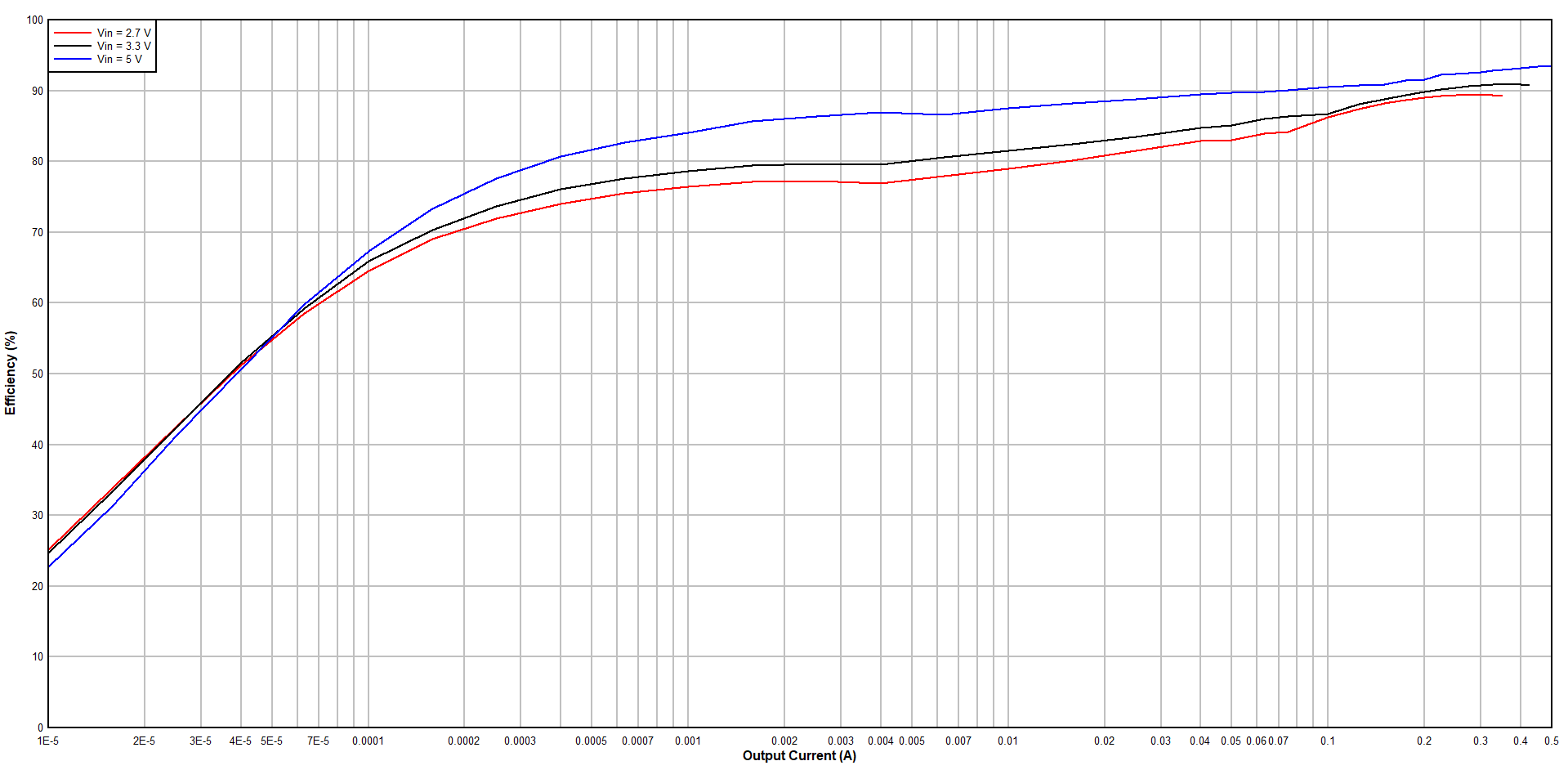
Figure 7-1 9 VOUT Efficiency vs
Output Current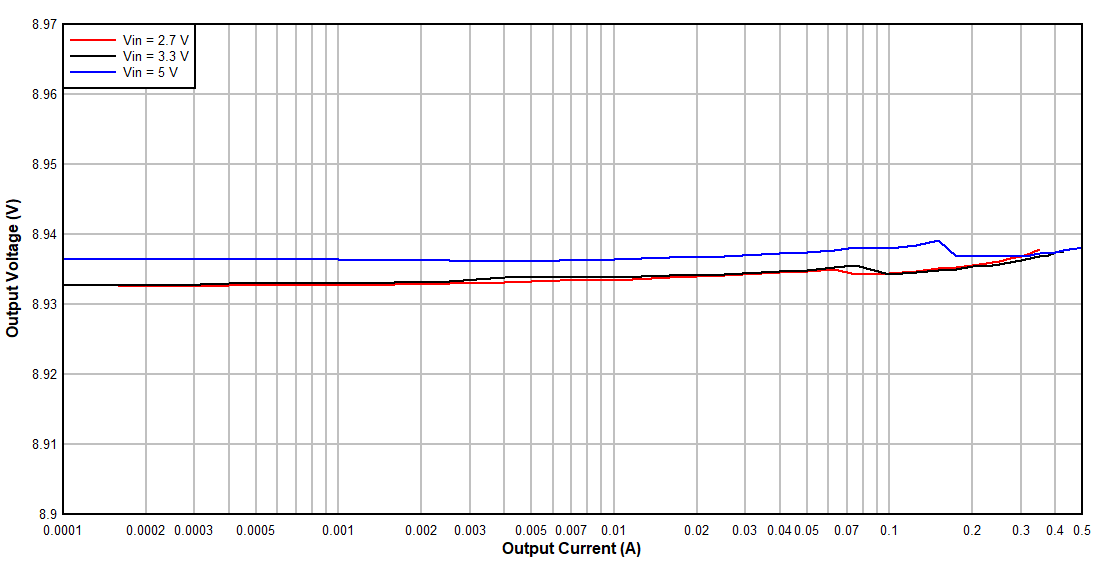
Figure 7-3 9 VOUT Regulation vs
Output Current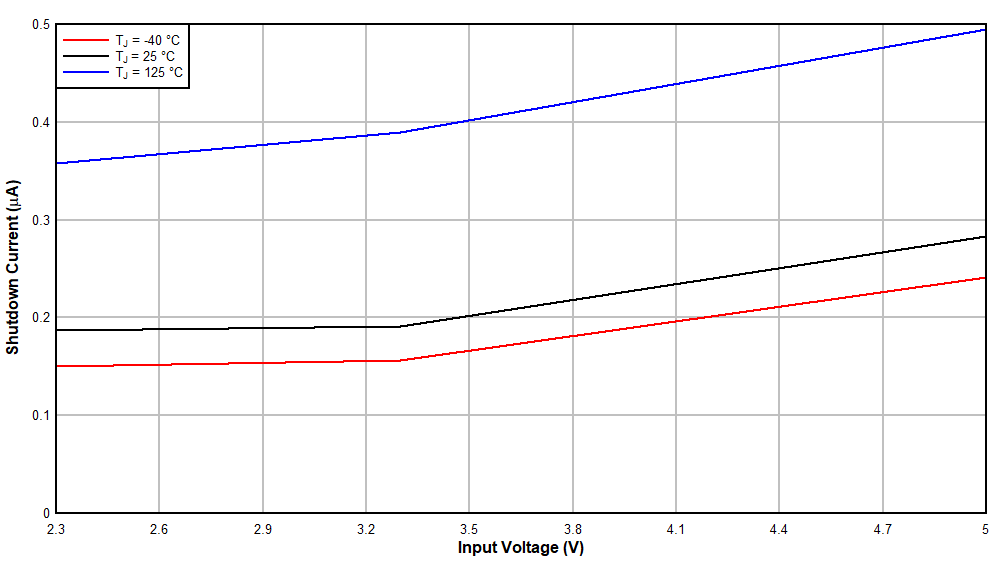 Figure 7-5 Shutdown Current vs Input
Voltage
Figure 7-5 Shutdown Current vs Input
Voltage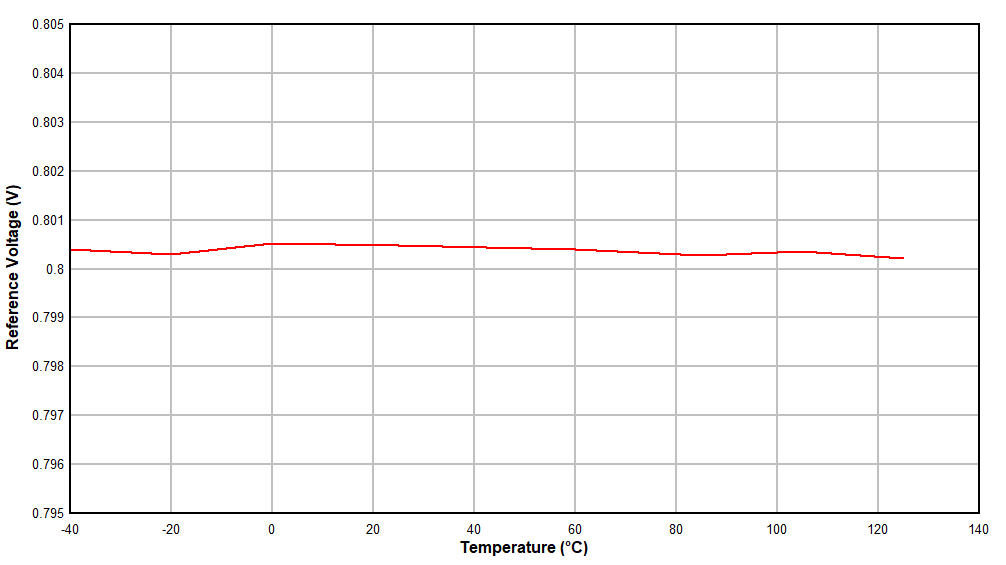 Figure 7-7 Reference Voltage vs
Temperature
Figure 7-7 Reference Voltage vs
Temperature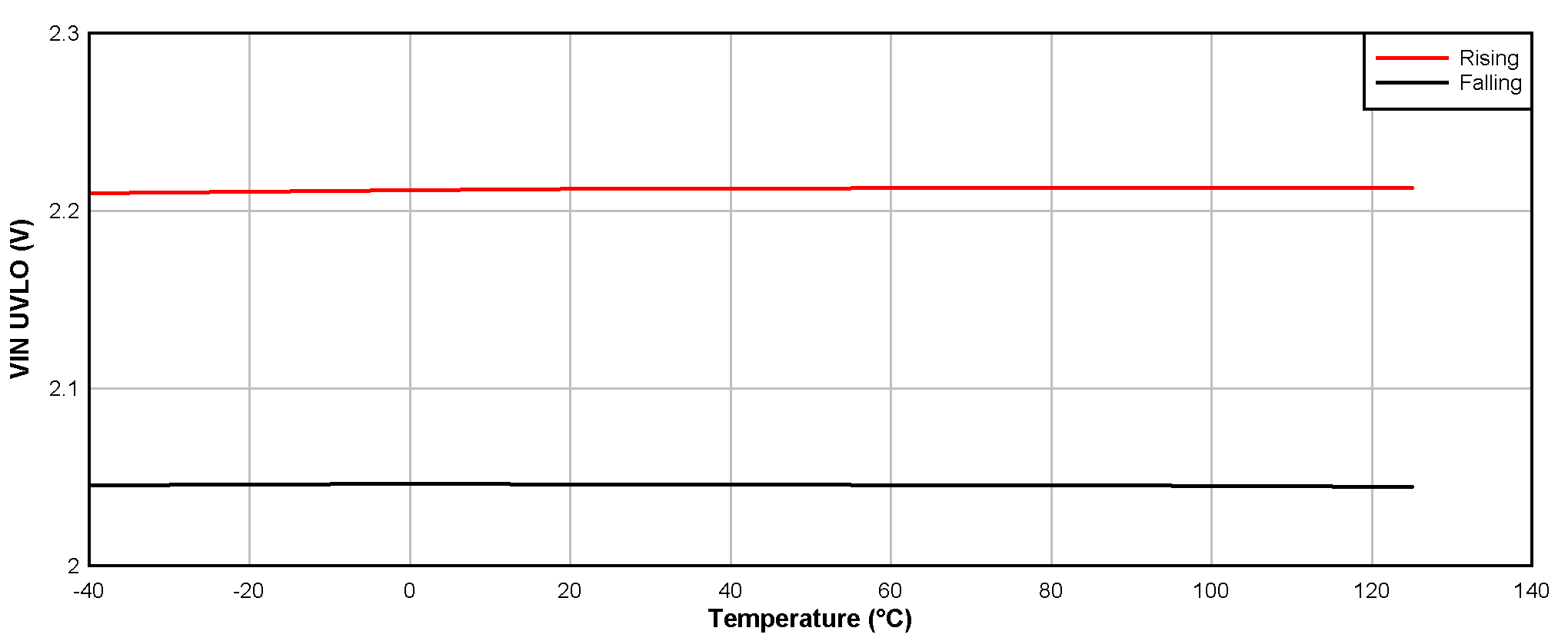 Figure 7-9 VIN UVLO
Threshold Voltage vs Temperature
Figure 7-9 VIN UVLO
Threshold Voltage vs Temperature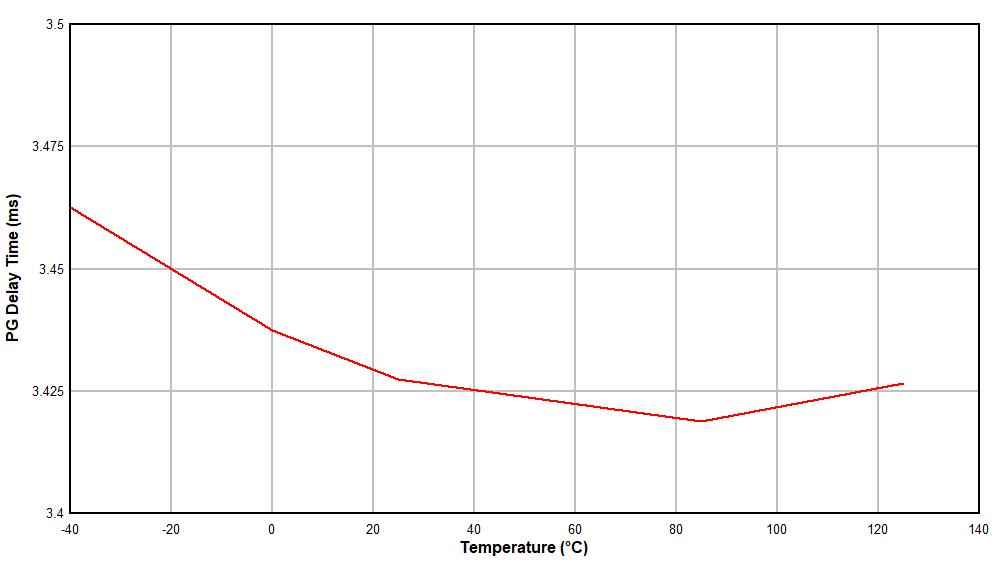 Figure 7-11 PG Delay Time vs
Temperature
Figure 7-11 PG Delay Time vs
Temperature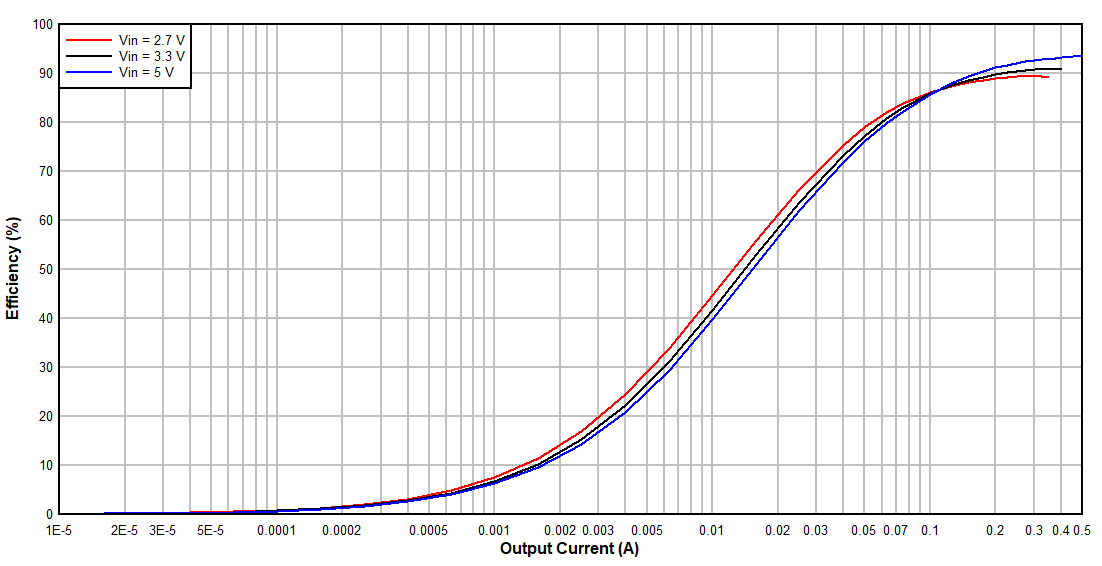
Figure 7-2 9 VOUT Efficiency vs
Output Current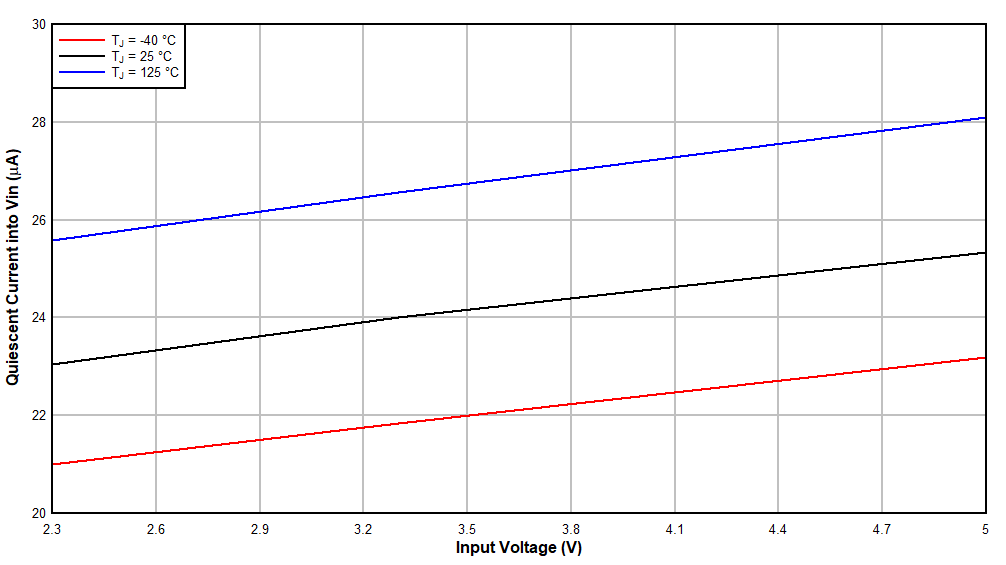
Figure 7-4 Quiescent Current into
VIN vs Input Voltage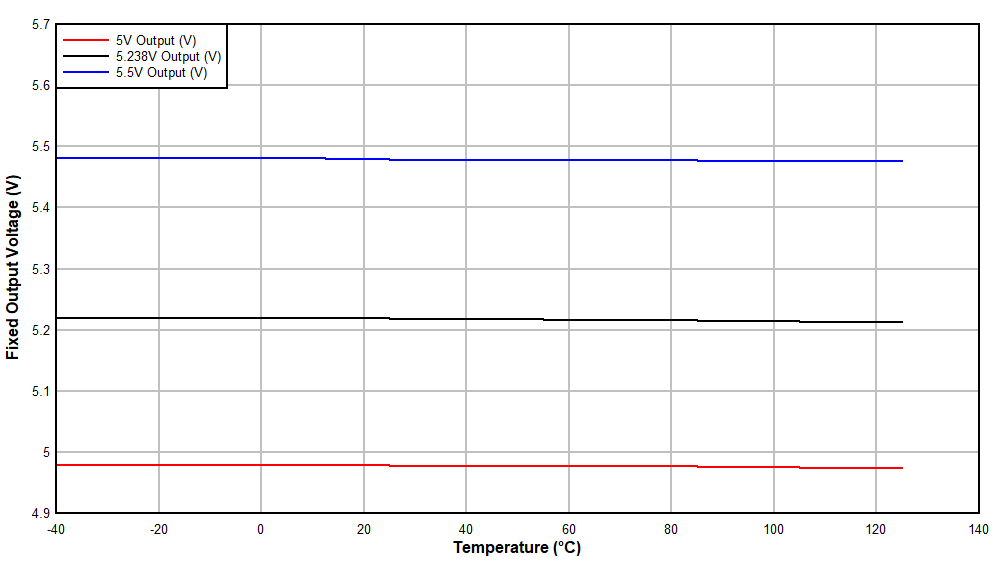 Figure 7-6 Fixed Output Voltage vs
Temperature
Figure 7-6 Fixed Output Voltage vs
Temperature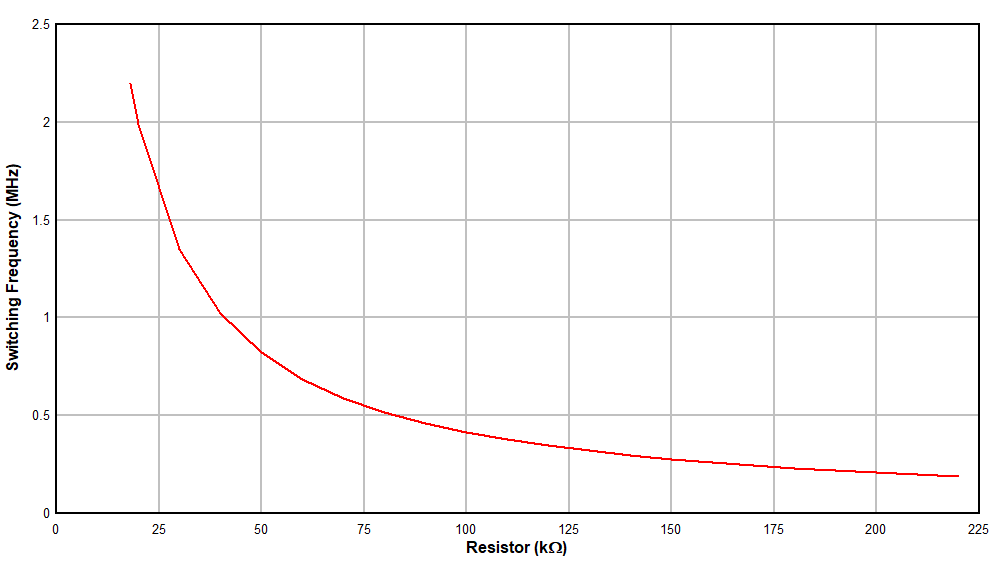 Figure 7-8 Switching Frequency vs
Setting Resistance
Figure 7-8 Switching Frequency vs
Setting Resistance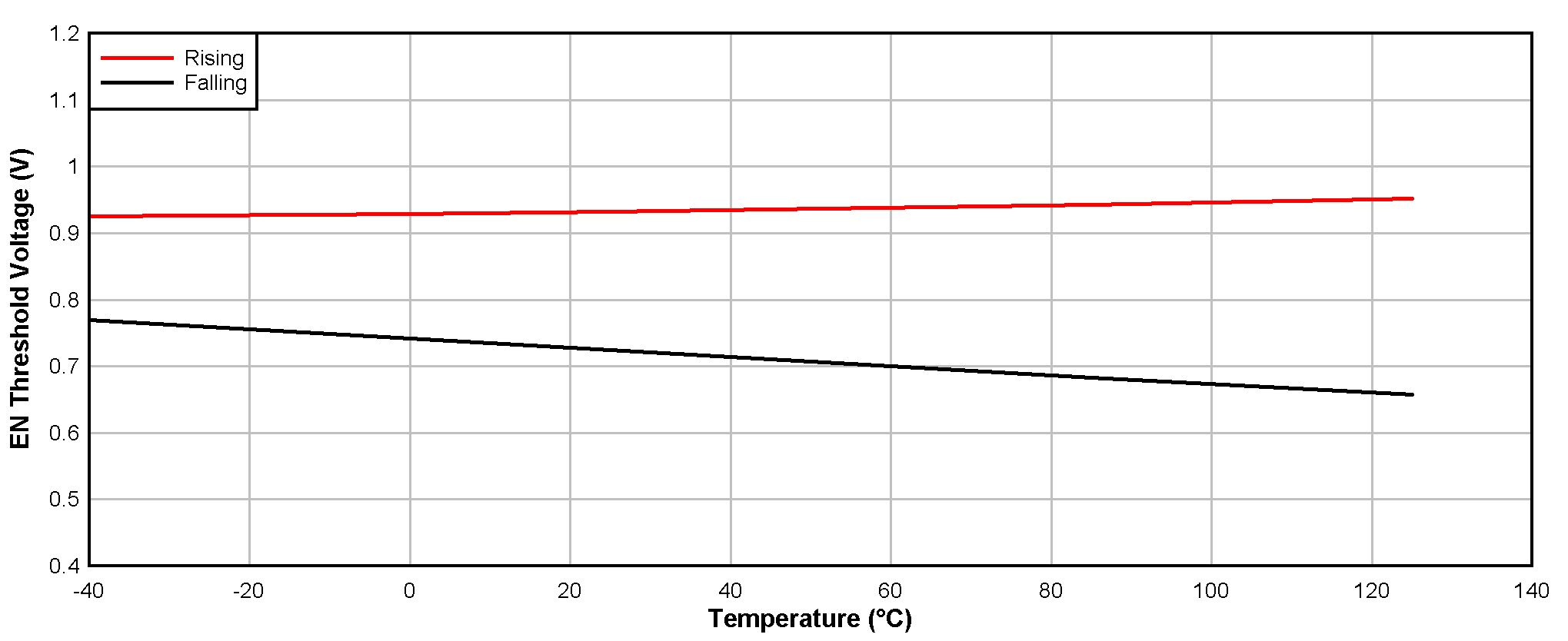 Figure 7-10 EN Threshold Voltage vs
Temperature
Figure 7-10 EN Threshold Voltage vs
Temperature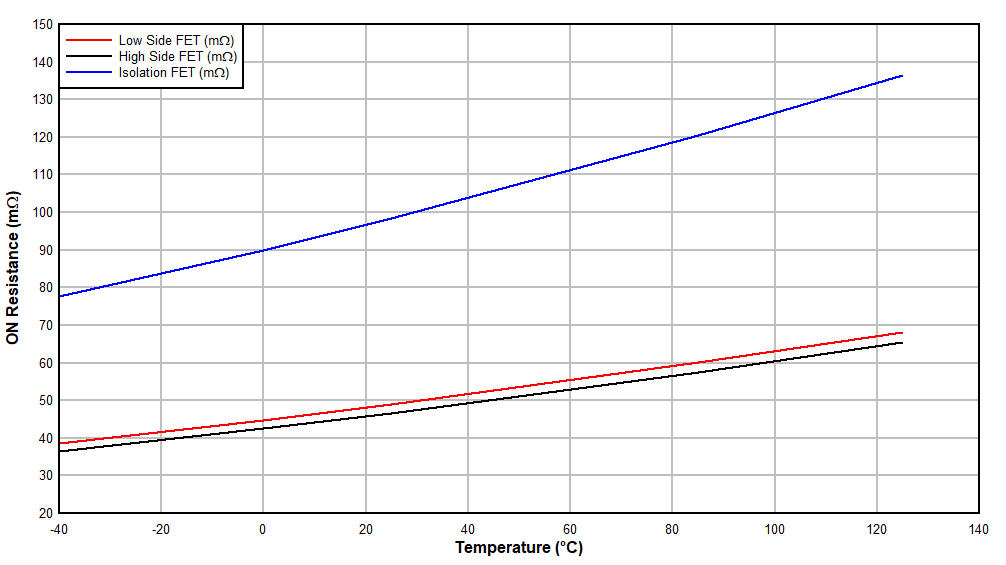 Figure 7-12 RDSON vs
Temperature
Figure 7-12 RDSON vs
Temperature

| VOUT = 9 V | Auto PFM | Fsw = 2.2 MHz |

| VOUT = 9 V | Auto PFM | Fsw = 2.2 MHz |
 Figure 7-5 Shutdown Current vs Input
Voltage
Figure 7-5 Shutdown Current vs Input
Voltage Figure 7-7 Reference Voltage vs
Temperature
Figure 7-7 Reference Voltage vs
Temperature Figure 7-9 VIN UVLO
Threshold Voltage vs Temperature
Figure 7-9 VIN UVLO
Threshold Voltage vs Temperature Figure 7-11 PG Delay Time vs
Temperature
Figure 7-11 PG Delay Time vs
Temperature
| VOUT = 9 V | FPWM | Fsw = 2.2 MHz |

 Figure 7-6 Fixed Output Voltage vs
Temperature
Figure 7-6 Fixed Output Voltage vs
Temperature Figure 7-8 Switching Frequency vs
Setting Resistance
Figure 7-8 Switching Frequency vs
Setting Resistance Figure 7-10 EN Threshold Voltage vs
Temperature
Figure 7-10 EN Threshold Voltage vs
Temperature Figure 7-12 RDSON vs
Temperature
Figure 7-12 RDSON vs
Temperature